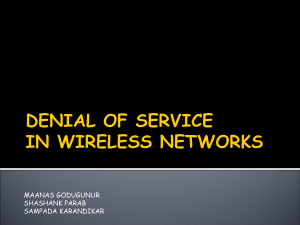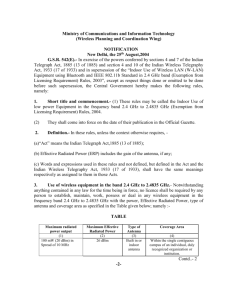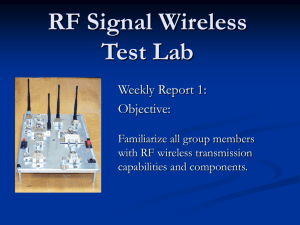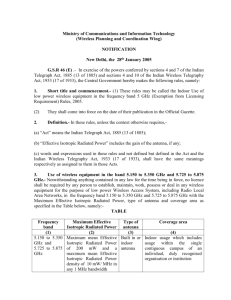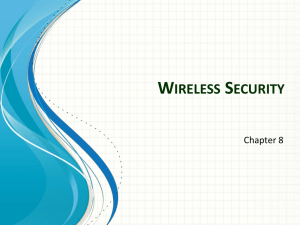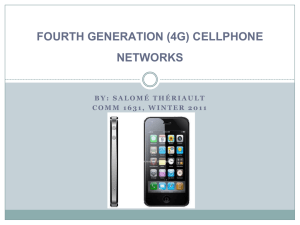Click here to view the document.
advertisement
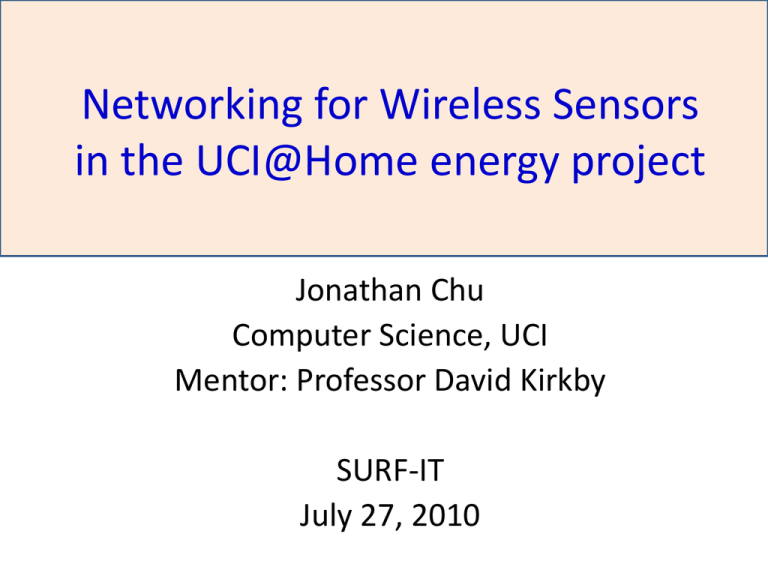
Networking for Wireless Sensors in the UCI@Home energy project Jonathan Chu Computer Science, UCI Mentor: Professor David Kirkby SURF-IT July 27, 2010 Overview • Group Interdisciplinary project to design, assemble, and integrate energy measuring devices into homes • Determine whether immediate feedback on energy patterns can change a subject’s behavior and reduce wasteful activities • Collaboration between physics and social science departments Broadcast Storm Problem in Wireless Networks • Our wireless network is a self configuring network of devices connected by wireless links • Problem occurs during flooding when a host receiver must take in multiple packets from different transmitters simultaneously. Packets will block each other and cause packet loss. • Time Division Multiple Access (TDMA) methodology could be used to assign time slots to specified receivers on the same channel Time Synchronization • Transmitter and receivers should be synchronized as accurately as possible for scanning channels For our purposes, accuracy within +/- 1 millisecond was sufficient RF Scanner • To measure electromagnetic interference in rooms • Electromagnetic interference can be caused by radio signals, wifi signals, phone, microwave, etc.. • Program in software, the Nordic nRF24L01+ transciever Implementation • Had to understand and program wireless protocols at the lowest, most complex level of the OSI architecture, the Physical Layer OSI Model 7. Application Layer 6. Presentation Layer 5. Session Layer 4. Transport Layer 3. Network Layer 2. Data Link Layer 1. Physical Layer 2.4x GHz Band Nordic Transceiver broadcasting at 2.450 GHz band Laptop wireless 802.11g Signature of a Laptop’s wireless signal at WLAN channel 1 Centered at 2.412 GHz with a .022 GHz band Channel Scanning • Graph of Amplitude over Time for each frequency • Scans from 2.400 to 2.500 GHz, in increments of .01GHz with 1 second for each increment, Home Microwave Interference Your home microwave can cause interference at around 2.45 GHz Testing range of Nordic nRF24L01+ • Test packet loss between 2 nRF24L01+ for varying distances • The greater the distance, the greater the packet loss rate • Random noise causes data to vary Repeater • How to improve range? • Place device between hub and leaf to repeat packets from each other. Repeater • Pros: Seemed to be fairly effective in increasing range of wireless devices, quick and easy solution • Cons: additional hardware required, costs, • Alternative: In a network with multiple nodes connected to each other, nodes themselves can act as repeaters; these are called mesh networks • Many different types of mesh network protocols can be used Wireless Bootloader • System used was AVR Atmega328p + Nordic nRF24L01+ transciever • Normally, each device must be manually programmed by STK500v1 protocal via ICSP header; updating firmware is pain • Have been and still am working on wireless bootloader, extremely difficult, bootloader must be below 4K, on air timing cannot disrupt baudrate, every packet must make it through, detailed protocol implementation Acknowledgements • Professor and mentor David Kirkby SURF-IT program organizers • Calit2 (Stuart Ross, Shellie Nazarenus, Anna Spitzer) • UROP (Said Shokair)
